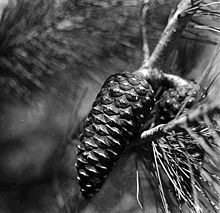கண்டபலம் kaṇṭa-palam, n. < kaṇṭa கண்டம்¹ kaṇṭam
, n. < khaṇḍa. A portion of the front hall, in a temple; கோயில் முக மண்டபப்பகுதி. (S. I. I. v, 236.)
The Vatican sculpture of pine-cone and peacocks is explained as a homage to ancestors kept in front of a temple.
खण्ड khaṇḍa खण्ड a. [खण्ड्-घञ्Hieroglyphs:
kaṇṭal 'pine-cone'; maraka'peacock' Rebus:
khaṇḍa, kaṇṭa 'temple front' smāraka, 'memorial for ancestors'.Slipped teracotta plate with 2 holes on border. Painted decoration on inside surface.Harappa.3rd millenium BC.National Museum New Delhi. A stylized figure of stag,with abstract decorative motifs indicative of cosmic space?
The Vatican has honored pine cone by erecting this monument:
Vatican Museum: giant pine cone. Description: Vatican City: Vatican Museum: giant pine cone (gilt bronze, originally a Roman fountain dating from 1st or 2nd century AD) (Cortile della Pigna, Courtyard of the Pine Cone)
http://www.cambridge...PC1617681e.html
Vatican Museum: giant pine cone. Description: Vatican City: Vatican Museum: giant pine cone (gilt bronze, originally a Roman fountain dating from 1st or 2nd century AD) (Cortile della Pigna, Courtyard of the Pine Cone)
http://www.cambridge...PC1617681e.html
 Image of Aleppo pine cone (Israel)[i]
Image of Aleppo pine cone (Israel)[i]Ash. piċ -- kandə ʻ pine ʼ, Kt. pṳ̄ċi, piċi, Wg. puċ, püċ (pṳ̄ċ -- kəŕ ʻ pine -- cone ʼ), Pr. wyoċ, Shum. lyēwič (lyē -- ?).(CDIAL 8407). Cf. Gk. peu/kh f. ʻ pine ʼ, Lith. pušìs, OPruss. peuse NTS xiii 229. The suffix –kande in the lexeme: Ash. piċ-- kandə ʻ pine ʼ may be cognate with the bulbous glyphic related to a mangrove root: Koḍ. kaṇḍe root-stock from which small roots grow; ila·ti kaṇḍe sweet potato (ila·ti England). Tu. kaṇḍe, gaḍḍè a bulbous root; Ta. kaṇṭal mangrove, Rhizophora mucronata; dichotomous mangrove, Kandelia rheedii. Ma. kaṇṭa bulbous root as of lotus, plantain; point where branches and bunches grow out of the stem of a palm; kaṇṭal what is bulb-like, half-ripe jackfruit and other green fruits; R. candel. (DEDR 1171). Rebus: kaṇḍa‘tools, pots and pans of metal’.
The flanking peacocks have been explained as a memorial for ancestors (See rebus readings given above).
Peacock of immortality of the Harappan burial urn
 Harappa. Painted jar. Jar with red slip and black painted motifs including peacock, vegetation and the famous intersecting – circle designs such vessels were probably used as marriage gifts or for other ritual occasions.
Harappa. Painted jar. Jar with red slip and black painted motifs including peacock, vegetation and the famous intersecting – circle designs such vessels were probably used as marriage gifts or for other ritual occasions."Late Harappan Period dish or lid with perforation at edge for hanging or attaching to large jar. It shows a Blackbuck antelope with trefoil design made of combined circle-and-dot motifs, possibly representing stars. It is associated with burial pottery of the Cemetery H period,dating after 1900 BC.The Late Harappan Period at Harappa is represented by the Cemetery H culture (190-1300 BC) which is named after the discovery of a large cemetery filled with paintedburial urns and some extended inhumations. The earlier burials in this cemetery were laid out much like Harappan coffin burials, but in the later burials, adults were cremated and the bones placed in large urns (164). The change in burial customs represents a major shift in religion and can also be correlated to important changes in economic and political organization. Cemetery H pottery and related ceramics have been found throughout northern Pakistan, even as far north as Swat, where they mix with distinctive local traditions. In the east, numerous sites in the Ganga-Yamuna Doab provide evidence for the gradual expansion of settlements into this heavily forested region. One impetus for this expansion may have been the increasing use of rice and other summer (kharif) crops that could be grown using monsoon stimulated rains. Until late in the Harappan Period (after 2200 BC) the agricultural foundation of the Harappan cities was largely winter (rabi) crops that included wheat and barley. Although the Cemetery H culture encompassed a relatively large area, the trade connections with thewestern highlands began to break down as did the trade with the coast. Lapis lazuli and turquoise beads are rarely found in the settlements, and marine shell for ornaments and ritual objects gradually disappeared. On the other hand the technology of faience manufacture becomes more refined, possibly in order to compensate for the lack of raw materials such as shell, faience and possibly even carnelian." (Kenoyer in harappa.com slide description) http://www.harappa.com/indus2/162.html
Hieroglyphs on Samarra bowl: Eight fish, four peacocks holding four fish, slanting strokes surround
ayo ‘fish’; rebus: ayas ‘metal’
mora peacock; morā ‘peafowl’ (Hindi); rebus: morakkhaka loha, a kind of copper, grouped with pisācaloha (Pali). [Perhaps an intimation of the color of the metal produced which shines like a peacock blue feather.] moraka"a kind of steel" (Sanskrit) smāraka 'memorial' (Sanskrit)
Cemetery H dish. Harappa. Slipped teracotta plate with 2 holes on border. Painted decoration on inside surface.Harappa.3rd millenium BC.National Museum New Delhi. Stylized figure of stag,with abstract decorative motifs indicative of cosmic space.
Himalayan or Bhutan pine-cones could have provided the models for the depiction -- by Meluhha artisans-- of the hieroglyph on ancient Near East artifacts.
Kalyanaraman
November 17, 2013







